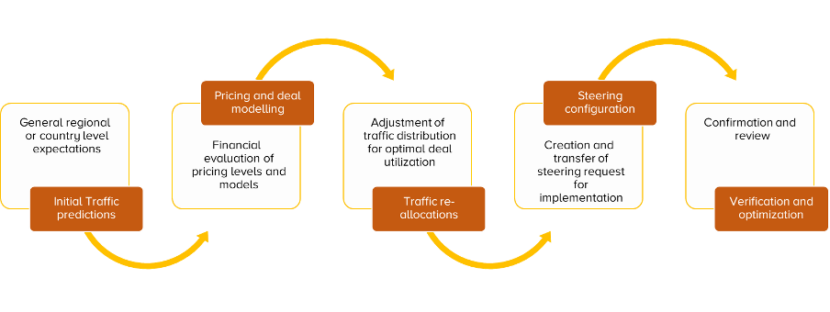Automation of Roaming in an Open Ecosystem with Yaana
The need for automation in the roaming process
As we raised in a previous blog on Event-Driven Steering, roaming complexity is increasing significantly. To better tackle rising complexity, we must do a lot more with a lot less. Hence, automation is the key to achieving this and reducing dependency on our dwindling resources. We must identify areas where we can automatically resolve roaming issues. This will, in turn, free up our precious resources to work on more important challenges.
Cellusys & Yaana: steering towards the optimum roaming distribution
The main point of control is Cellusys Steering of Roaming. It allows operators to influence the roaming experience their customers have. Steering of Roaming enforces MNO preferences about which networks their outbound roamers should attach to. This is typically, but not exclusively, dictated by price. MNOs usually want to steer to the most cost-effective network. This will depend on the discount agreements they have previously negotiated.
Yaana provides financial modelling and forecasting. It takes into account the discount agreements in place and the volumes of usage consumed so far. It also considers the expected volumes of usage consumed in each roaming market. Based on this, it can make steering recommendations to ensure that discount commitments are met. This enables steering to target the optimum distribution of roamers in each roaming market.
Streamlining the Process with Automation
Today, operators may have both Yaana and Cellusys systems in place, but without a connection between them. This means that users may use the Yaana system to determine based on forecasting how they should steer, then in turn, they manually configure the steering system according to this.

The goal of the partnership between Yaana and Cellusys is to automate this process via open APIs. This can ensure accuracy of translation, and it is operationally efficient as it eliminates unnecessary human involvement. Additionally, Yaana benefits from the information that Cellusys provides them from signalling because it improves their modelling and forecasting. This could include information about QoS issues on a particular network when they occur. The information passed from Cellusys to Yaana may also include feedback on rule performance. For example, if Yaana recommended a rule where 90% of traffic was the recommended steering, but only 75% maximum can be achieved by the steering rule, SoR can inform Yaana about this and the models/forecasts can be updated accordingly to improve accuracy.
The benefits of an open ecosystem
MNOs don’t have to rely on one vendor to do more with less. An open ecosystem based on collaboration and open APIs enables MNOs to have it all: a best-of-breed set of vendors whose partnership creates benefits in optimisation:
- Automated link between projections and execution
- Early deviation detection and analysis
- Swift adjustments for optimal financial position
..and efficiency:
- Minimize operational cost
- Single source of truth between financial and operational teams
- Auditable accuracy
